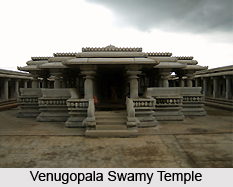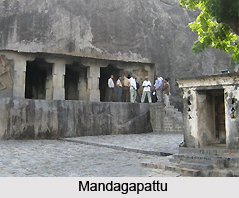 Temples in Viluppuram district are large in number and most of them are very ancient and more than one hundred years old. Apart from temples, this district also possesses mosques, churches and Jain temples, which also form a major place of pilgrimage in the Viluppuram district. Situated amidst three hills in the Viluppuram district is the Gingee Fort. Today Gingee presents its ruined forts, temples and granaries, and portrays a different picture from the glorious period of its bygone days. But the remains of its past expresses a lot about the numerous invasions, warfare and bravery, which it witnessed.
Temples in Viluppuram district are large in number and most of them are very ancient and more than one hundred years old. Apart from temples, this district also possesses mosques, churches and Jain temples, which also form a major place of pilgrimage in the Viluppuram district. Situated amidst three hills in the Viluppuram district is the Gingee Fort. Today Gingee presents its ruined forts, temples and granaries, and portrays a different picture from the glorious period of its bygone days. But the remains of its past expresses a lot about the numerous invasions, warfare and bravery, which it witnessed.
One of the notable temples in this district is the Venugopala Swamy Temple. It contains a remarkable sculpture depicting Lord Krishna playing his flute and accompanied by two consorts. Another interesting feature in this temple is a finely polished, broad smooth slab which is there in front of the temple. Another temple is the Kamalakkanni Amman Temple. This small shrine is dedicated to Kamalakkani Amman or Goddess Durga, a local deity. This temple is located on the way to the citadel on Rajagiri Hill. It contains a sacrificial altar and well-preserved mural paintings of the Nayak period. There is also an ancient Chola temple in this district known as the Thiruvaamathoor temple. This fifteen hundred years old temple is dedicated to Lord Sri Abiramaeshwarar.
 Thumpoor is one of the places in the district of Viluppuram which is famous for the presence of the temple of Lord Nagamman which is one thousand four hundred and fifty years old. There is another Chola temple found in Ennairam of Narasimma Swamy Koil constructed by Rajaraja Chola I. Shatru Malleswaralayam is one of the rock cut temples at Thalavanur which was erected by the Pallava King Mahendra Varman. Here the sculptures along with Tamil and Sanskrit inscriptions are found. The temple of Angala Parameswari in Melmalayanur is thirty two kilometers from Gingee. Festival is celebrated here from February to March every year. A prominent feature of this festival is the Simimasana kollai. The people who attend the festival cook large quantities of grain of various kinds and set them out in the burning ground and offer them to goddess who is brought there. In the inner sanctum of the temple, there is a snake pit which is being worshipped.
Thumpoor is one of the places in the district of Viluppuram which is famous for the presence of the temple of Lord Nagamman which is one thousand four hundred and fifty years old. There is another Chola temple found in Ennairam of Narasimma Swamy Koil constructed by Rajaraja Chola I. Shatru Malleswaralayam is one of the rock cut temples at Thalavanur which was erected by the Pallava King Mahendra Varman. Here the sculptures along with Tamil and Sanskrit inscriptions are found. The temple of Angala Parameswari in Melmalayanur is thirty two kilometers from Gingee. Festival is celebrated here from February to March every year. A prominent feature of this festival is the Simimasana kollai. The people who attend the festival cook large quantities of grain of various kinds and set them out in the burning ground and offer them to goddess who is brought there. In the inner sanctum of the temple, there is a snake pit which is being worshipped.
The temple of Lord Ranganatha at Singavaram is another famous temple in the district of Viluppuram. It is a good specimen of south-Indian type of rock-cut shrine. The idol of Lord Ranganatha is in a reclining posture. The idol measures twenty four feet in length which together with the inner sanctorum, is carved out of a single rock. It is believed to be bigger than that of Theidol in Srirangam. The Venkataramana temple with its striking sculptures and carved pillars, narrates the aesthetic skills of the Nayaka dynasty. The temple was constructed by Muthialu Nayaka from A.D. 1540 to A.D. 1550. This temple possesses mandapas, gopuras and sculptured panels depicting gods and goddesses in scenes from the Hindu epics. Several Tamil inscriptions are also found in the walls of the Mandapas. The temple seems to have witnessed hard times during the French occupation.
Mandagapattu is another famous temple which is located twenty kilometers from Viluppuram and seventeen kilometers from Gingee. It is a one hundred feet hillock, where the Mahendraverma I of Pallava Dynasty, constructed the cave temple. Apart from this there are several other temples in the Viluppuram district in the state of Tamil Nadu including the Arulmigu Subramaniya Swami temple, Pachchaiamman Temple, Purathana temple, etc. There is also a Jain cave and two temples dedicated to Parsvanatha and Chanraprabha. This cave served as the monastery of the monks of Virasangha from the eight to the ninth century A.D. Rich collection of bronze images are found in the temple.











